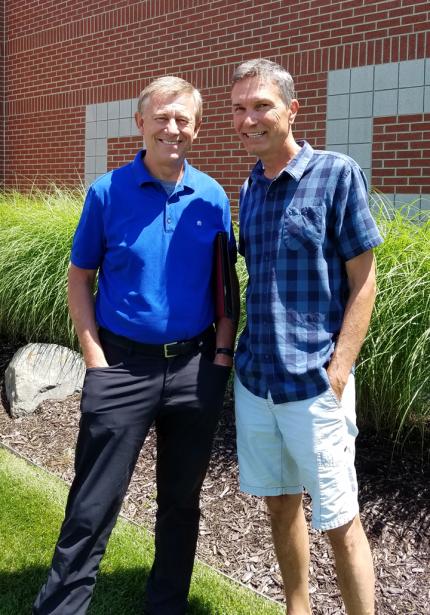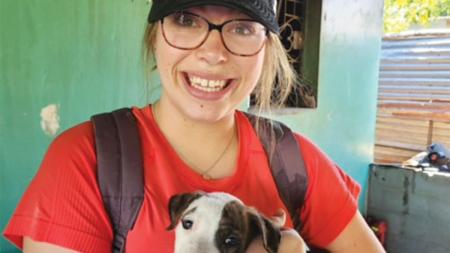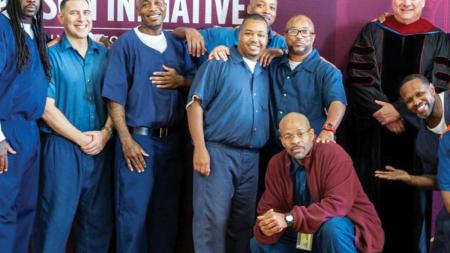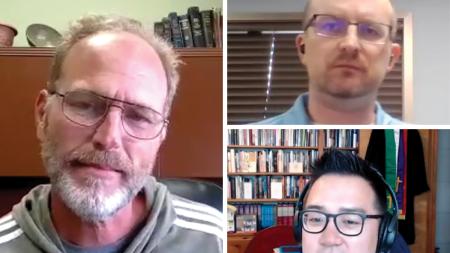Making Disciples with 'a Loving Hand'

Keith Doornbos (left) and Frank Wevers
Chris Meehan
Synod 2017 discussed declining membership and asked staff to seek out best practices related to church planting and renewal, and to share these with classes and churches. In light of this, CRC News will be running a series of occasional stories on churches and ministries that are addressing church renewal and lessons they have learned.
Keith Doornbos is the director of the Church Renewal Lab, which is based at Calvin Theological Seminary and works in a variety of ways with churches seeking to grow and sustain themselves in a challenging environment in which many congregations are struggling and unsure of the future.
The Renewal Lab has many resources to help churches sort through these challenges — and, as director, Doornbos helps to lead them along the way.
Recently Doornbos sat down with retired pastor Frank Wevers, a long-time colleague, and they spoke about issues they encountered over more than two decades in addressing challenges and growing churches in the Holland, Mich., area.
Hard-earned experience taught them lessons they agreed to share on church renewal and growth — lessons Doornbos helps to pass on in the Renewal Lab..
Over lunch at a restaurant near Holland, they both said that church growth and renewal always comes by relying on God’s guidance, followed by, with his grace, a commitment to making disciples — and doing this constantly in connection with their church community.
“A church has to be involved in people’s lives,” said Wevers, who retired last year after serving for more than 25 years as pastor of Calvary CRC in Holland.
“For a church to be refreshed and revived, it needs to focus on its calling and must have the approach of taking action. You don’t have to have all of the answers. You just have to love the people,” Wevers said.
This loving can take place in many ways. For instance, Wevers and his wife, Sally, met a Vietnamese woman with two children 10 years ago opened their lives to this family. They have stayed close and helped the family adjust to a new life in West Michigan. Wevers said he had the “sweet” experience to be there when the children made a profession of faith.
“If Christianity is to survive,” added Wevers, “it has to be more than a wagging finger. If people are to be pulled back into church, you won’t convince them only through theology. Only love will bring them back.”
Wevers first connected with Doornbos some years ago while Doornbos was serving as senior pastor at Calvary, a church that began as the North End Gospel Hall in 1912 with 32 people and grew slowly over the years. Today it has more than 1,000 members.
About 250 people were attending Calvary when Doornbos became pastor in the early 1980s.
“I saw all of the possibilities for this church that had been forged by those, such as Jack Roeda (retired pastor of Church of the Servant), who had preceded me,” said Doornbos.
“I realized that this congregation of blue-collar people did have the unique capacity to do ministry out of the mainstream — to seek those who were lost and embrace those who were found.”
Doing this was challenging, however, because the internal structure and leadership of the church needed to change, combining the mentality of being a chapel with an emphasis on outreach to establishing a vision for a church with a strong leadership structure and a full-fledged ministry.
With the help of Christian Reformed Home Missions, the church held trainings and workshops and developed ways in which it could remain true to its Reformed roots and at the same time address the needs of people in a complex, changing culture.
Among other things, the neighborhood around Calvary began to change, and people from a range of ethnic groups, especially Asian and Hispanic, began to move in. Younger families with children were also moving in.
Wevers came to Calvary in 1990 and served alongside Doornbos until he left in 1993 to serve Providence CRC, another congregation in Holland that faced challenges and was seeking a way forward.
When he arrived, Wevers saw right away that Calvary was a church “that was comfortable with messy and ragged people and welcomed them in,” regardless of their background.
Recalling the challenges he faced to help keep the church moving forward, Wevers said, “I was always just trying to do the next right thing and to balance us as we grew.”
The church needed, he said, to create clear job descriptions for the staff, to sort through the best ways to worship on Sunday, and especially to keep discerning where God was taking them.
One important element in this process involved holding a congregational banquet every year at which Wevers and other leaders laid out what they saw as the mission of the church for the next year.
“People were eager to hear about the vision we were called to do and where we needed to go to do it,” said Wevers.
At this yearly banquet, he said, “we asked, ‘Where are we weak, and how can we better do mission?’ Especially we asked, ‘How can we better serve our community?’” said Wevers.
Out of this they developed ministries for people in need of transitional housing, renewed their commitment to programs for children and youth, and connected with other ministries and organizations to better serve the needs in the Holland area.
Several years ago, as the church grew, it became clear that they needed to build a larger facility, and they were able to do that on a 22-acre parcel of land nearby.
“I recall how every Friday we would go up on a hill on the property and pray, asking God if this was where we should build a new church -- to give us guidance,” said Wevers.
Through a series of circumstances, they decided to go ahead and construct the new church.
Once the church was built and some time passed, said Wevers, there seemed to be a need to invest more money for a church expansion.
But Wevers came to believe that church resources might better be used to support church members engaging in addressing poverty and injustice around the world. He brought that up at one of the yearly banquets.
“We decided to declare a year of jubilee (to sort through whether they ought to use their resources for something other than expanding the church), and God used this time to change the trajectory of the church,” he said.
They decided to invest more deeply in mission work and soon began sending members to such places as Honduras, Ecuador, Zambia, Palestine, and other places of need within the U.S.
A significant focus on Haiti came later.
Eventually more than 350 church members embraced the goal of reaching beyond the walls of their facility and were sent out to join with people there in various projects.
“Over my time there, I realized the importance of staying open to learning new things so that we could become the church Jesus wants us to be,” said Wevers.
Lessons he and Doornbos have learned over the years in helping to grow and renew a church include the need “for the people to have a Pentecost passion to preach the gospel and to see lives change,” said Doornbos.
There is no easy script or process for a church wishing to renew itself to follow, added Wevers. And each church is different. But part of any movement toward renewal “is for a church to adapt and to be adapting,” he said.
“Calvary has been on a long trajectory moving in the same direction. It has been constantly moving head,” motivated and powered by God’s grace, said Wevers.
Doornbos, who came to Providence CRC in 1993 when it had only a few of members and grew to more than 800 by the time by the time he left in 2015, added that the key to church life is “to be making disciples and to be giving sacrificially, and always to be a loving hand.”
If your church has a story to tell about your challenges as you face the future, contact Chris Meehan.


